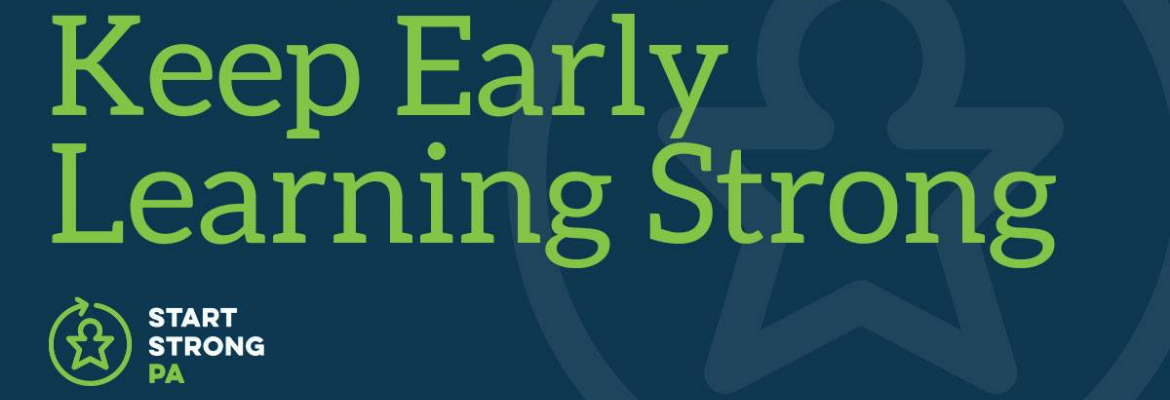Early Care & Education Research
A child’s brain develops most during the first five years of life
“The brain undergoes its most rapid development in the first threes years of life, and in this development, the environment plays a central role. Nerve connections that are associated with specific skills such as language are developed during this critical period.” (American Academy of Pediatrics)
Your child’s development depends on both the traits he or she was born with (nature), and what he or she experiences (nurture). All areas of development social/emotional/intellectual/language/motor) are linked. Each depends on, and influences, the others. (“From Neurons to Neighborhoods: The Science of Early Childhood Development,” ZERO TO THREE)
Quality child care improves a child’s chances to leave a productive life
The Abecedarian Project was a carefully controlled study in which 57 infants from low-income families were randomly assigned to receive early intervention in a high-quality child care setting and 54 were in a non-treated control group. Some of the results include:
Children who participated in the early intervention program had higher cognitive test scores from the toddler years to age 21.
Academic achievement in both reading and math was higher from the primary grads through young adulthood.
Intervention children completed more years of education and were more likely to attend a four-year college.
The American Academy of Pediatrics (AAP) recognizes that high-quality early education and child care for young children improves their health and promotes development and learning. The AAP notes in a revised policy statement titled, “Quality Early Education and Child Care From Birth to Kindergarten,” that early education includes all of the child’s experiences at home, in child care and in other preschool settings. The AAP recommends that pediatricians work in their communities and with their patients’ families to improve access to, and quality of early childhood educational experiences. (Press statement, 1/3/05)
Quality child care benefits the entire community
Improves productivity of current workforce:
Employers find that child care can have a significant impact on their businesses. Lack of access to affordable, quality care may make it difficult for businesses to hire qualified employees. Productive and valued employees may leave their jobs because of child care problems, increasing hiring and training costs. Employees may be forced to take time off because of child care problems or spend time at work handling child care concerns. All of these factors can reduce productivity and profits. Many businesses recognize this and support child care programs. But a recent study found that only 1 percent of revenues for child care and early education came from the private sector. (“Investigating in Child Care: Challenges Facing Working Parents and the Private Sector Response,” U.S. Dept. of the Treasure, 1998, pg. vi,)
Early education is the most cost-effective way to decrease the number of unskilled adults in the future. Children from quality preschool and early learning settings have higher high school graduation rates and higher college achievement. A report issued by the Committee for Economic Development cited research showing that when children are better educated, they are more productive adults, likely to be healthier, pay more taxes and are less likely to require welfare and other public assistance. Nationally, business leaders have called for increased early childhood education quality, access, and funding. (“How does high-quality child care benefit business and the local economy?’” Economic Opportunity Institute, 2002)
Four in five (81%) of American businesses surveyed said public funding of voluntary pre-kindergarten for all children would improve America’s workforce (“American Business Leaders’ Views on Public Funded Pre-Kindergarten and the Advantages to the Economy,” Committee for Economic Development, December 2005, PDF)
“Over 20 percent of US workers are functionally illiterate and Innumerate, a much higher percentage than in leading European countries. This is a major drag on U.S. Competitiveness and a source of social problems. If current trends continue, the annual rate of productivity growth attributable to education will decline by half or more in the next two decades.
“Enriched preschool centers available to disadvantaged children on a voluntary basis coupled with home visitation programs have a strong track record promoting achievement for disadvantaged children, improving labor market outcomes and reducing involvement with crime.” (“The Productivity Argument for Investing in Young Children,” James Heckman, 2000 Novel Laureate, and Dimitriy Masterov, University of Chicago, December 2004)
Save tax dollars:
Pennsylvania's investment in quality pre-k programs could save Pennsylvania $100 Million in special education costs. The cost-savings study, initiated by the Pennsylvania Department of Education, concluded that if pre-kindergarten was made available to all children, approximately 76,000 or 5- percent would participate, ultimately reducing the number of students requiring special education services by 2, 380 and saving Pennsylvania taxpayers $102 million. “For every $1 invested [in pre-k], 16-31 cents will be saved elsewhere in the school system.” (“The Cost Savings to Special Education from Pre-Schooling in Pennsylvania,” October 2005, the Pennsylvania Build Initiative)
A Landmark, long-term study of the effects of high-quality early care and education on low-income three-and four-year-olds shows that adults at age 40 who participated in a preschool program in their early years have higher earnings, are more likely to hold a job, have committed fewer crimes, and are more likely to have graduated from high school. The High/Scope Perry Preschool study was conducted by the High/Scope Educational Research Foundation. Overall the study documented a return to society of more than $17 for every tax dollar invested in the early care and education program. (“The High/Scope Perry Preschool Study Through Age 40,” November 2004)
According to the Chicago Longitudinal Study of a Child-Parent Center in Chicago, every $1 spent on high-quality early education programs saves society $7 in future costs in special education, delinquency, crime control, welfare, lost taxes, and other areas. “Experts Say Early Education Pays Off,” (August 2003) – National Institute for Early Education Research
“Results of the cost-benefit analysis indicated that each component of CPC Programs had economic benefits that exceeded costs. With an average cost per child of $6,730 (1998 dollars) for 1.5 years of participation, the preschool program generated a total return to society at large of $47,759 per participant. The largest benefit was program participants’ increased earnings capacity projected from higher educational attainment.” (Age 21 Cost-Benefit Analysis of the Title 1 Chicago Child-Parent Center Program Executive Summary, June 2001)
Reduces crime:
“Providing high-quality Head Start or other pre-kindergarten programs to all eligible at-risk children could prevent as many as 1,700 kids from committing crimes when they grow up.” (Head Start and Quality Pre-Kindergarten Could Prevent 1,700 Kids From Becoming Criminals Every Year in Pennsylvania, Fight Crime Invest in Kids PA, June 2006)






